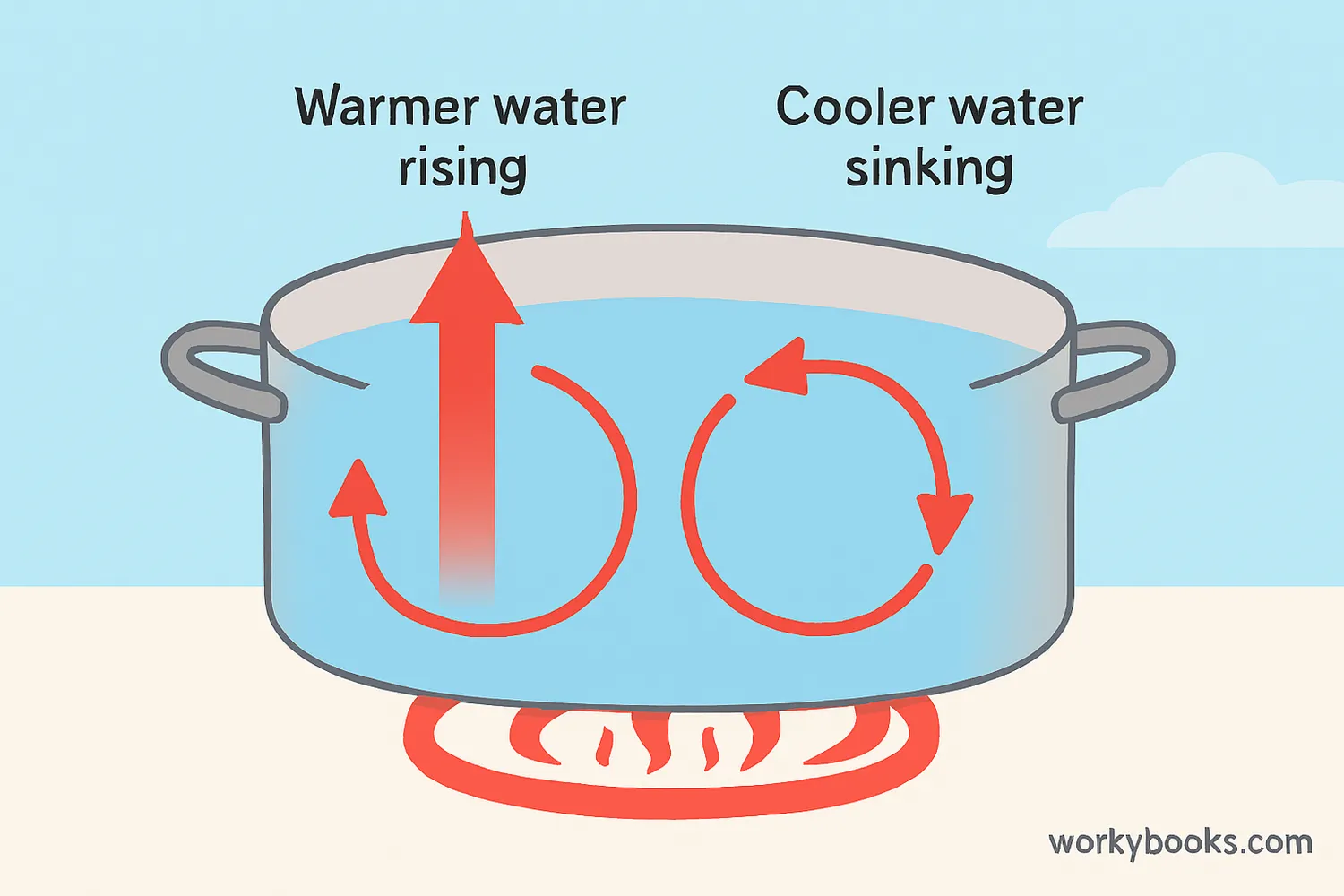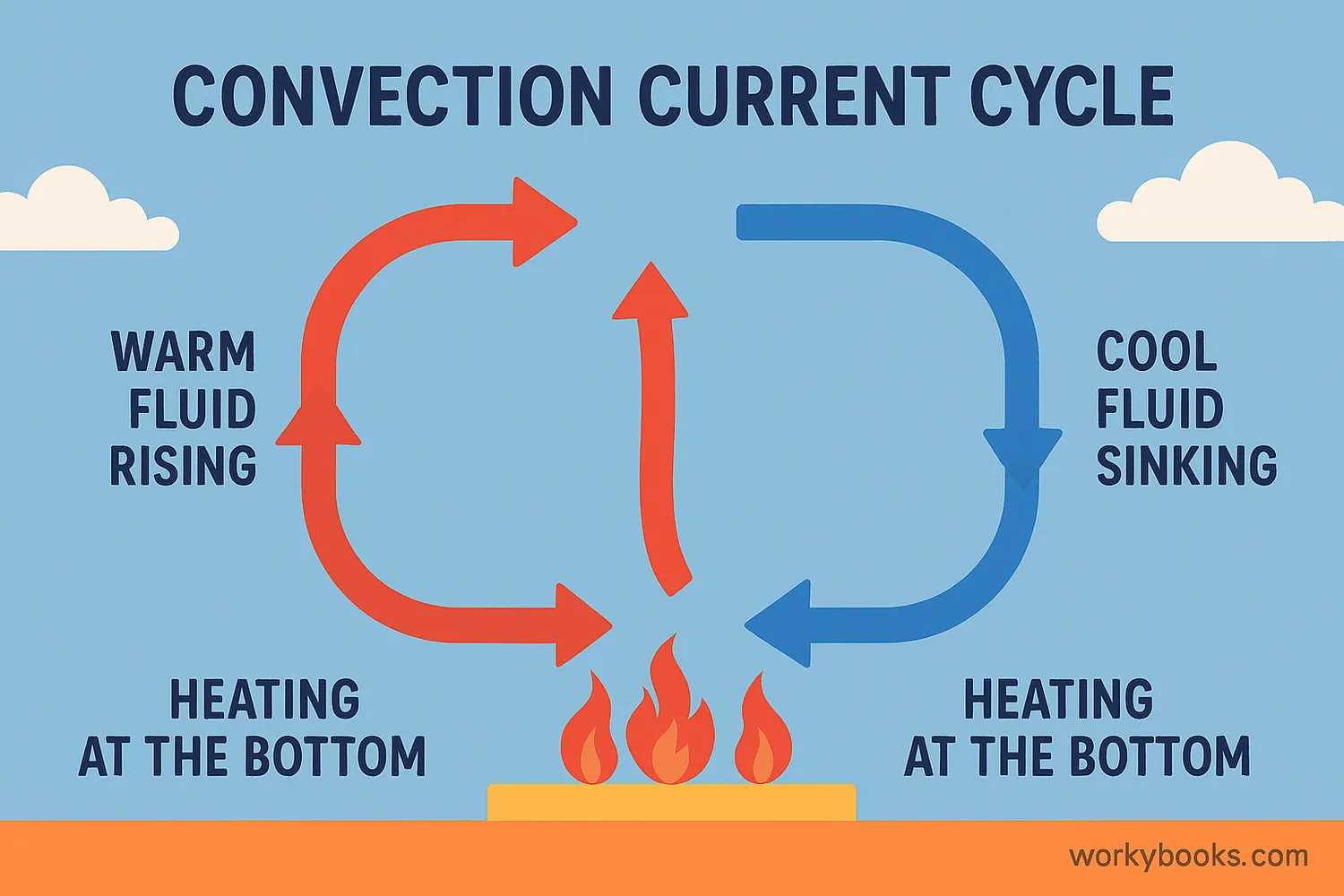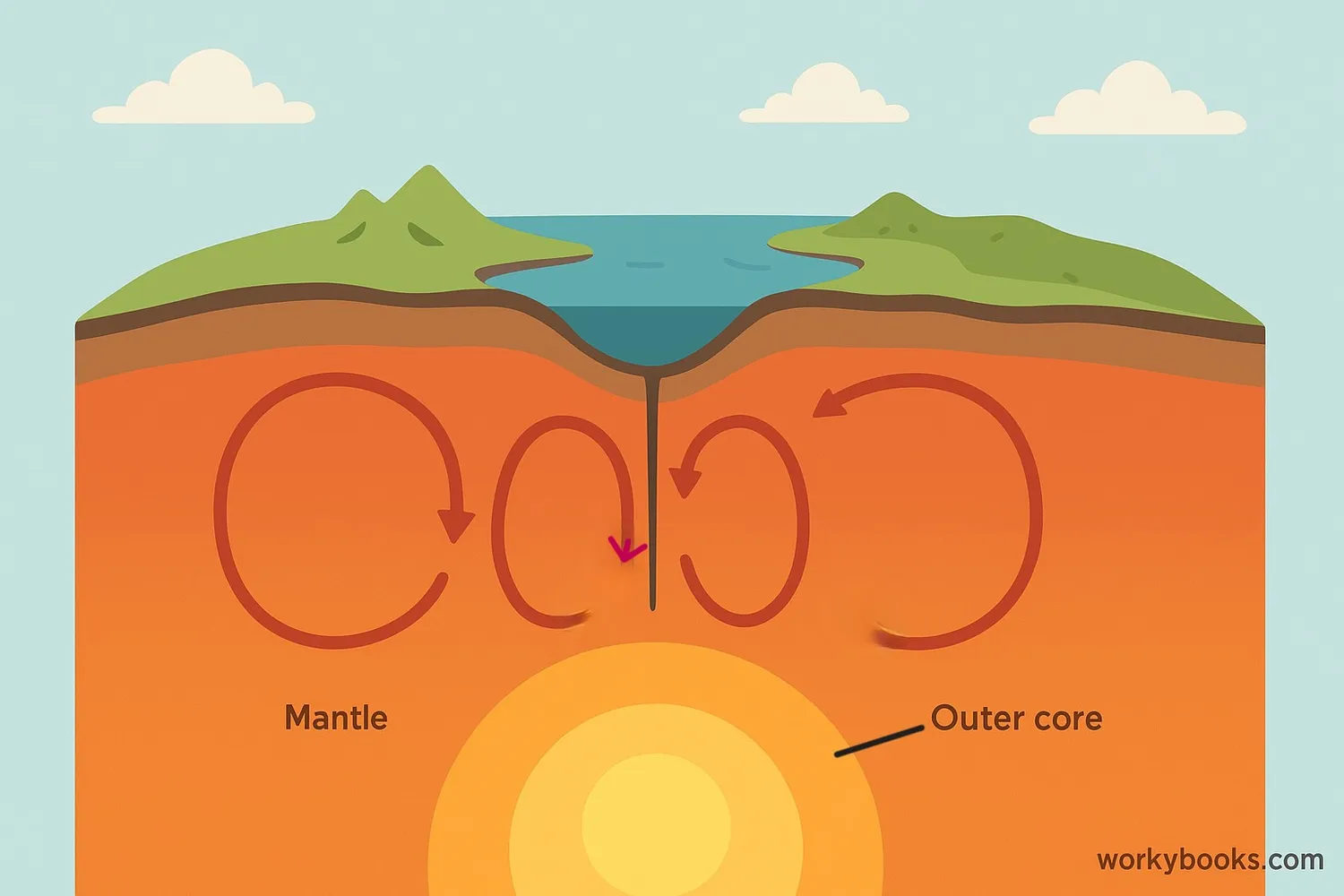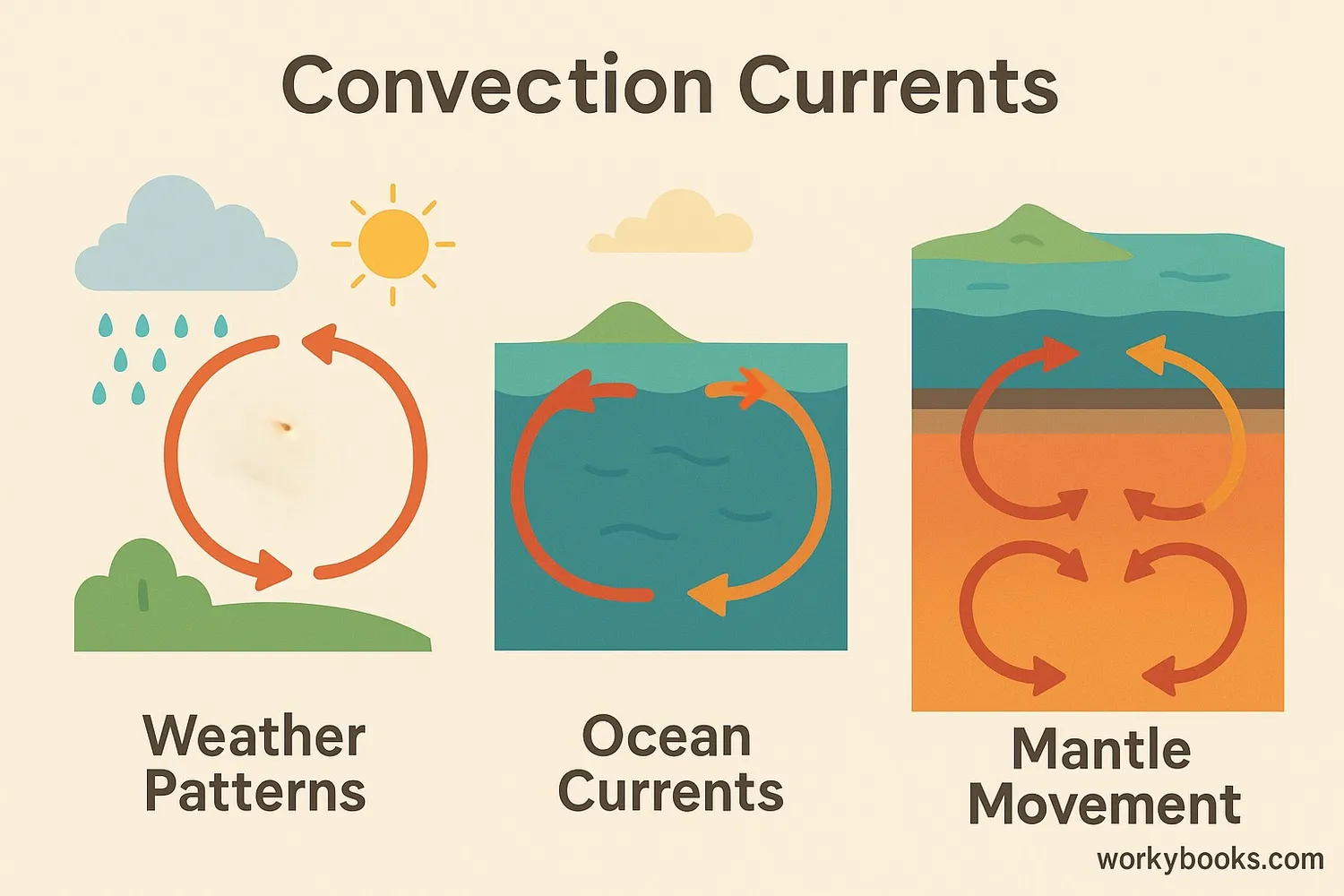Convection Currents - Definition, Examples, Quiz, FAQ, Trivia
Discover how heat moves liquids and gases to shape our world!
What are Convection Currents?

Convection currents are movements in fluids (liquids and gases) caused by temperature differences. When a fluid is heated, it becomes less dense and rises. As it moves away from the heat source, it cools down, becomes denser, and sinks back down. This creates a continuous circular motion called a convection current.
Think of it like this: when you heat water in a pot, the water at the bottom gets hot first. This hot water rises to the top, while cooler water sinks to the bottom to get heated. This circular movement is a convection current!
Science Fact!
Convection currents are responsible for ocean currents, weather patterns, and even the movement of Earth's tectonic plates!
How Convection Currents Work

Convection currents happen because of differences in density caused by temperature changes. Here's how it works step by step:
Heating
A heat source warms the fluid at the bottom
Expansion
The warm fluid expands and becomes less dense
Rising
Less dense warm fluid rises upward
Cooling
Fluid cools as it moves away from heat
Sinking
Cooler, denser fluid sinks back down
This cycle creates a continuous flow called a convection cell. The movement transfers heat from warmer areas to cooler areas, helping to distribute heat energy throughout the fluid.
Heat Transfer!
Convection is one of three ways heat moves - along with conduction (direct contact) and radiation (through space).
Convection Currents in Earth's Mantle

Deep inside Earth, convection currents in the mantle (the layer between the crust and core) are responsible for moving tectonic plates! Here's how it works:
Heat Source
Earth's core heats the bottom of the mantle
Rising Rock
Hot rock becomes less dense and rises
Sinking Rock
Cooler rock becomes denser and sinks
This circular movement in the mantle slowly drags the tectonic plates along with it. Where plates move apart, new crust forms. Where they collide, mountains form or one plate slides beneath another. This process is what causes earthquakes, volcanoes, and the creation of mountain ranges!
Real-World Examples

Convection currents are all around us! Here are some important examples:
Weather Systems
Creates wind patterns, storms, and weather fronts
Ocean Currents
Drives the movement of water in our oceans
Cooking
Boiling water and convection ovens use this principle
Home Heating
Hot air rises to warm rooms evenly
Understanding convection currents helps us predict weather, understand ocean ecosystems, and even design more efficient heating systems!
Convection Currents Knowledge Check
Test what you've learned about convection currents with this quiz!
Frequently Asked Questions
Here are answers to common questions about convection currents:
Amazing Convection Facts
Discover some fascinating facts about convection currents:
Earth's Engine
Convection currents in Earth's mantle have been moving tectonic plates for billions of years, creating continents and oceans!
Solar Convection
The Sun has massive convection currents that bring heat from its core to the surface, creating the granulated pattern we see!
Ocean Conveyor
The global ocean conveyor belt is a massive convection current system that takes 1,000 years to complete one full cycle around Earth!
Thunderstorm Power
A single thunderstorm is powered by convection currents that can move 8 million pounds of air per second!


